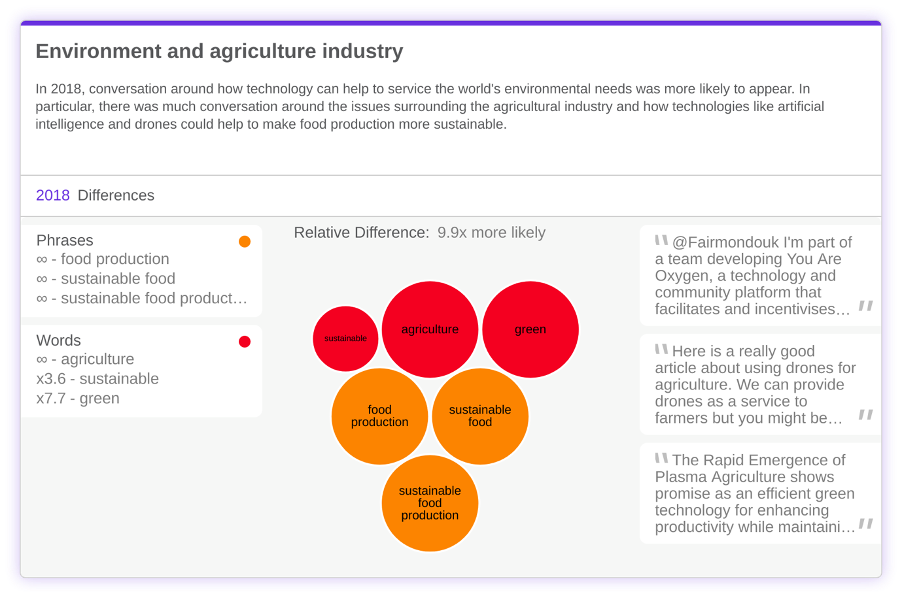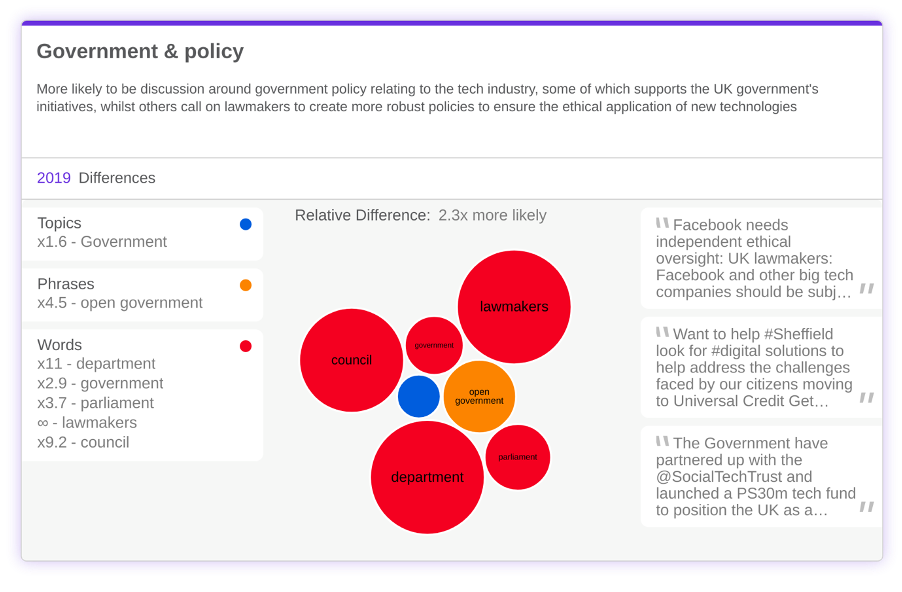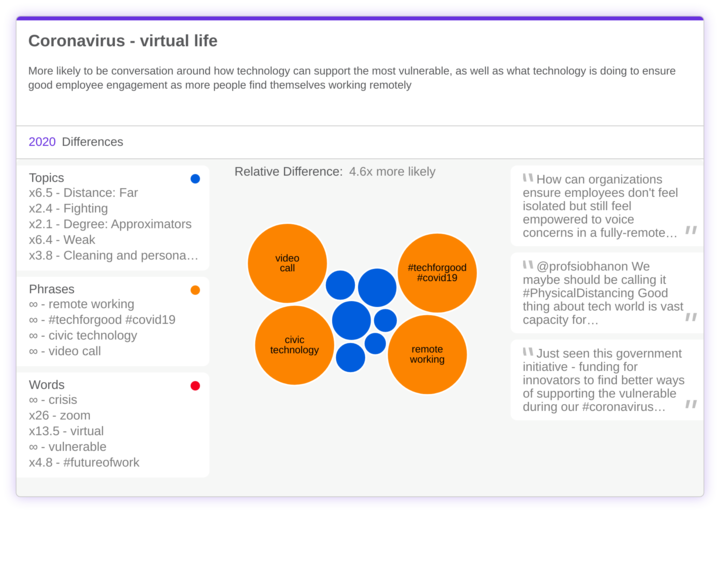Is coronavirus changing the way we think about the ethical applications of technology?

By Katie Norris
From 3D printers building ventilators, to drones delivering medical supplies, to a boom in demand for video conferencing tools, technology’s role in society has fundamentally shifted during the coronavirus pandemic.
Around the world, people are looking to new innovations to help fight the virus and keep society moving, and this has led to a renewed focus on the concept of ‘tech for good’. But how does the current conversation around the positive applications of technology differ to previous years, and what are the new emerging trends joining this ‘tech for good’ conversation?
In order to understand how the narrative is changing, I used Relative Insight’s platform and its comparison methodology to compare and analyse Twitter conversations around ethical technology from 2018 through to the present.
‘Tech for good’ in 2018: the environment
Starting in 2018, one of the key focuses of the ‘tech for good’ conversation is around developing new technological solutions to the world’s environmental issues, with the topic of ‘environment’ 9.9x more likely to appear in comparison to 2019 and 2020.


One of the main topics that appears is how technology could be used to make the agricultural industry more sustainable and efficient, with people citing the use of AI or drones as being innovations that might support the industry.
‘Tech for good’ in 2019: government policy and tech ethics
In 2019, we still see the impact of the early 2018 Cambridge Analytica scandal still being felt. The ‘tech for good’ conversation shifts in focus away from the ethical applications of technology, and more towards technology ethics as a whole and the government’s responsibility to regulate.


Similarly, tech ethics conversation around the industry’s influence on communities and wider society is 1.7x more likely to appear in 2019. There is discussion around the benefits of various technology that can help solve societal issues, but also apprehension around the ‘dark side’ of the influence of technology on core societal values – such as democratic process.
‘Tech for good’ in 2020: virtual life
In 2020, unsurprisingly, conversation around ‘tech for good’ is 4.6x more likely to focus on issues relating to coronavirus, possibly representing a shift away from the suspicions of tech ethics in 2019 and a renewed focus on the positive applications of innovation.


Alongside this wonderful application of video conferencing tools, I wonder what further innovation and positive applications of new technologies we might see as the pandemic continues.
2020 has seen a spike in conversation around technology as a force for good, as most of us have come to rely on technology like never before in both our personal, and work lives. As the crisis subsides, I think the concept of ‘tech for good’ will have changed dramatically and the ways in which society relies on technology will have been transformed.
It will be interesting to see whether greater suspicions around technology resurface, as we are already seeing contact tracing apps cause data privacy alarm bells to ring, and then, as the crisis eventually passes, how the ‘tech for good’ conversation shifts again. Will further conversation around solutions to environmental issues re-emerge after the crisis? Watch this space!
You may not be aware, but Relative Insight’s story comes with its own ‘tech for good’ history. Our technology was initially developed as a project with the child protection services in the UK using comparison technology to spot behaviour of adult men masquerading as children online.
Today, we apply the same methods of comparison to uncover crucial and unexpected differences in the way people use words, and it’s these insights that enable organisations to think differently about how their target audience talk.
If you would like to put the platform through its paces, contact us directly and we’ll show you how language comparison works, and what it means for your business.
